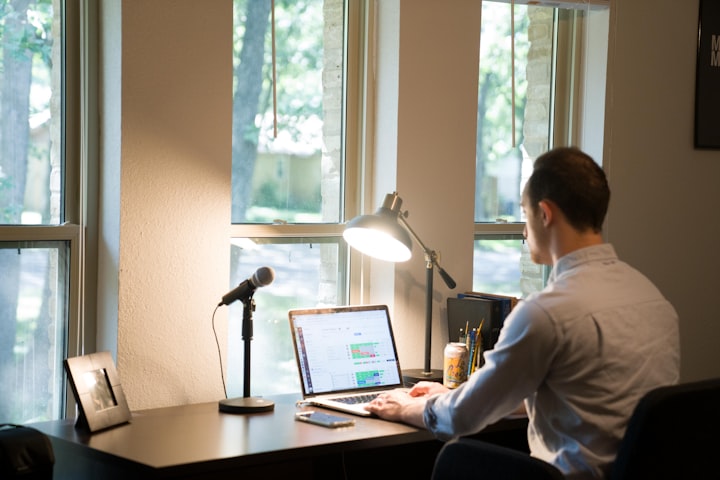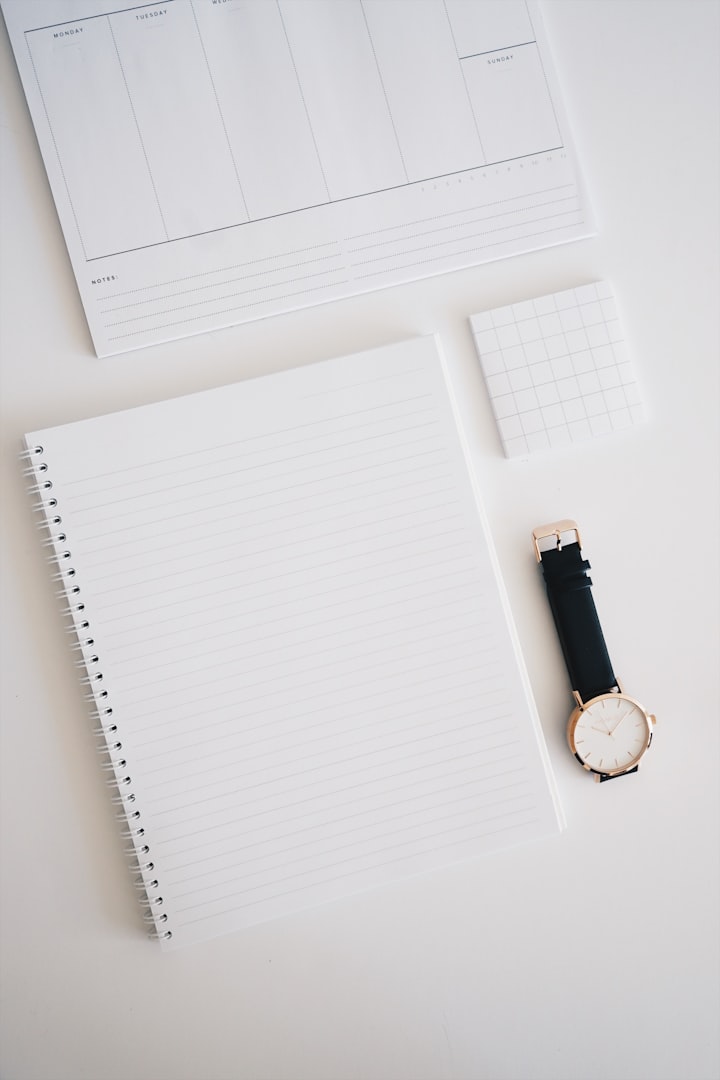
As more of us have started working from home the past year, you may have found it increasingly difficult to focus. All the small tasks you're physically away from in the office are now at your fingertips. You could start procrastabaking or binge another season of your favourite show and no one will ever know.
Clearly, this is a dangerous game. I'd like to share a few productivity tips that have worked for me over the past year, from someone that works a fully remote job. I promise there will be no 'healthy morning routines' (although still very important) but focusing purely on the workday. Most of these could be used for when you're going back into an office too.
1. Pomodoro Technique Tools
You may have heard of the Pomodoro Technique. This is a time management technique used to break work down tasks into smaller time intervals, normally 25 minutes separated by short 5 minutes breaks. The premise is that in those 25 minutes you do nothing, NOTHING, but focus on the job at hand. Since starting a task is often the most difficult part, especially if you don't know where to begin or it's just tedious, this is a great way to just get the momentum going. What I normally find is, after 25 minutes I just want to carry on with the task now that I'm in a flow.
A few tools you can use for this are:
The Forest App

Forest is a smartphone app (available on google, android and apple) that helps you stay away from your phone (and losing precious time doom scrolling on twitter) or can be added as a chrome extension to your google chrome browser to keep track of your pomodoro time.
The premise is when you want to work, you set the timer to 'planet' a tree (or a bush for shorter time intervals). The tree grows whilst you're working. If you leave the app and go onto others, it will 'kill' the tree. Planting tree gives you 'coin' points and you can use these to purchase new style of trees, and they even plant real ones!
The added loss of 'killing' a tree if you don't follow the pomodoro time detracts you from scrolling idly through other apps and brings you back to focusing on your work. The chrome extension does something similar, where you can add websites to block whilst the tree is being planted.
The mobile app also allows you to plant trees with multiple people which is great for shared working spaces with family and friends. Looking at your forest afterwards provides a visual of your focused time, rather than the arbitrary 'I feel like I've worked all day and got nothing done'.

Focus City

Focus City is another similar app where instead of planting trees, you build a city! This is for Macbook and I use it to block certain websites (mostly social media) when I have set the timer to work. I see my productivity increase tenfold when I have the timer on, because I feel less obliged to scroll through Instagram when I'm feeling a bit bored when there's that extra barrier not allowing me to enter the website to do so. Turning off the timer feels like cheating and when the time is complete, it feels incredibly rewarding to do what I like on a break (and guilt free now that I've worked).
The Forest timer starts from 10 minutes and Focus City timer from 15 minutes, both up to a duration of 2 hours.
2. Brain Dump Paper

At first, this seems like a strange productivity tip. However, I've found that when my mind wanders at work and enters diffused thinking (aka default mode) I end up remembering unrelated tasks such as needing to book appointments, replying to a friend or ordering something online. These are not urgent tasks and do not to be attended to right away. Therefore, the brain dump paper is a scrap notepad that you have in reach of your desk to quickly jot down (dump) small thoughts that crop up so they're out of your brain and you're back in the headspace for working.
Now, you may be thinking 'why not just use a notes app on your computer'? I used to do this however, then I discovered the following:
1. I never looked back at the brain dump notes and often forgot the tasks
2. My notes app is already filled with 100 other notes
3. When I have so many windows open on my laptop for work, opening up yet another only sends me further to chaos
This is a common method used for managing anxiety. Writing down your anxieties is a method of dumping them out of your brain, as if you're hitting yourself on one ear leaning over trying to push out every last negative thought. Therapeutic.
3. 1-3-5 Prioritisation
Prioritisation is key for any time management and most of us have experienced the never-ending to-list.
This is how the 1-3-5 prioritisation works. Write down 3 headings:
1 Big Task
3 Medium Tasks
5 Small Tasks
Fill these in accordingly. Your big task must be done today, even if it's the only one you complete.
Examples include: something that has taken longer than it should, important tasks you have been putting off or tasks for a deadline.
Medium tasks are less of a priority, but still important to be done after the big task.
Examples include: sending important e-mails so the recipient has enough time to reply or starting to chip away at research for a presentation.
Small tasks are the least priority, but would be nice to get done that day. These shouldn't have any urgency at all, and if you like, even these can be set in priority order.
Examples include: replying to non-urgent e-mails or organisation/admin tasks that would just make your computer files a little less painful to go through.
This has been my favourite prioritisation technique because it takes it a day at a time and is easy to transfer tasks from one day to the next. Maybe try this method to plan your goals not just for the day but for the whole week or month.
4. Start and Finish at the Same Time Everyday
This is more of a work from home specific, since it definitely has been easier to work longer hours than is necessary. Meetings run over and you feel you may as well finish the work at hand since, where are going to go in a pandemic? However, if you're someone that is going to go back into an office, working through extra half hours or more here or there will soon not feasible.
Even if you're working remotely, once restrictions are gone and we are back to 'normal' life, you want to be able to fill the evenings and weekends back in with your usual activities, or just chill! Finishing on time means you are less likely to procrastinate on a task since you won't feel like you've got ages to complete it.
Starting and finishing at the same time exactly like you would in the office is crucial for projecting how long tasks will take in the future. If you continue working an extra half an hour every day during the pandemic, and think about how long the same task will take in the next project when you're back in the office, you will find that you severely underestimated it. Your superiors will just believe you are doing more work in the same amount of time and will therefore expect more and more from you. You definitely do not want that!
5. Finding the Right Music
Since I've started working from home, I've found my neighbour has an incredibly yappy dog. It just won't stop barking for hours at a time which now thinking about it, is probably illegal. Because I'm British and we avoid confrontation like the plague (not that we've avoided a literal plague) I resulted to buying noise-cancelling headphones and now all is well!
I normally listen to classical music whilst working, but I've found it's started to get repetitive and boring. I realised I was craving an ambience and have become obsessed with ambient music of fantasy worlds on Youtube.
Some of my favourites are from Harry Potter:
or Lord of the Rings:
However if that's not your style, it could be anything from coffee shop music jazz to a rainy winter storm. The purpose is to have music which transports you to a place where you are there to focus and work, but also with sounds you're familiar with so your brain doesn't start to wander off.
Music (without words) has been studied to improve focus and productivity, even if it's just to calm you down to get started. Shop around and find what works for you.
I hope any of the tips help your productivity whilst working from home! Thank you for reading :)
About the Creator
AV
A whole lot of thoughts structured into blog posts
Instagram: @_instashika






Comments
There are no comments for this story
Be the first to respond and start the conversation.